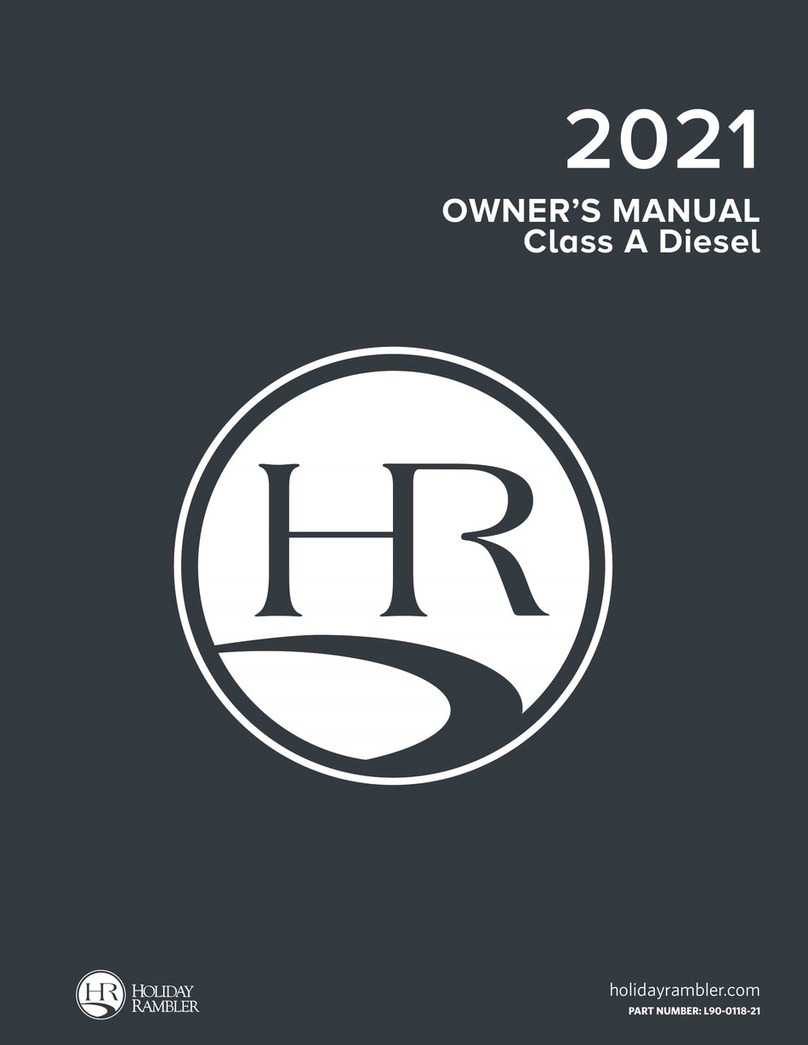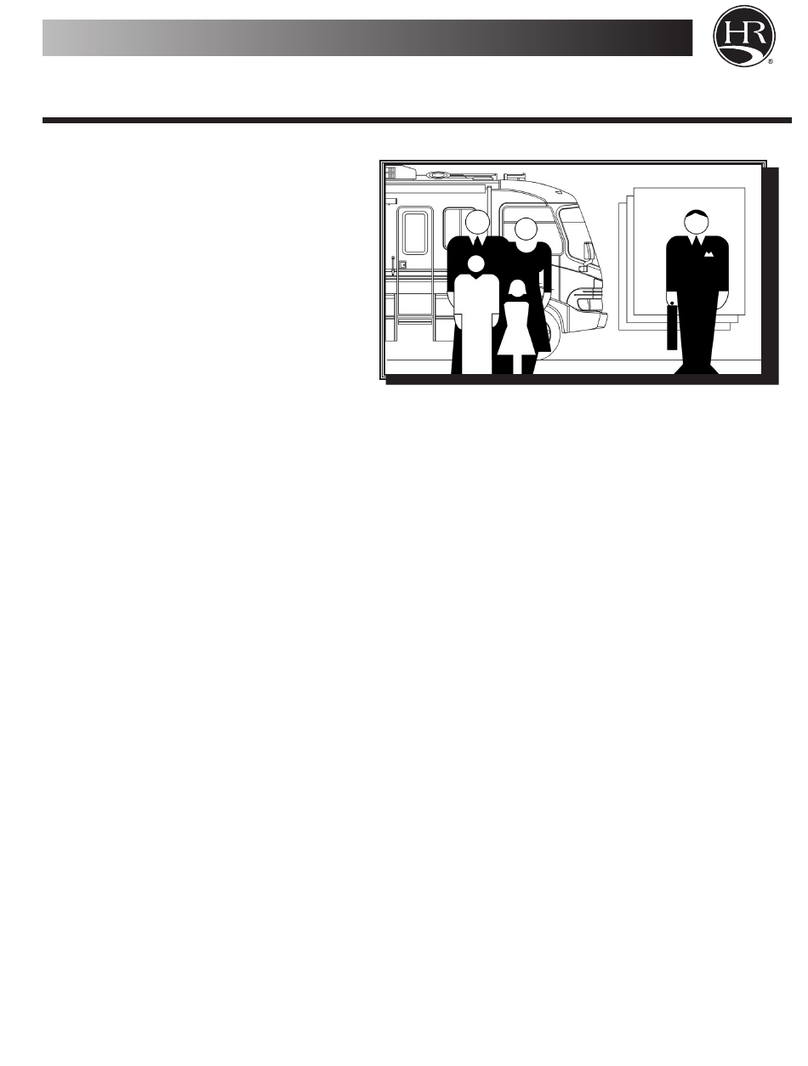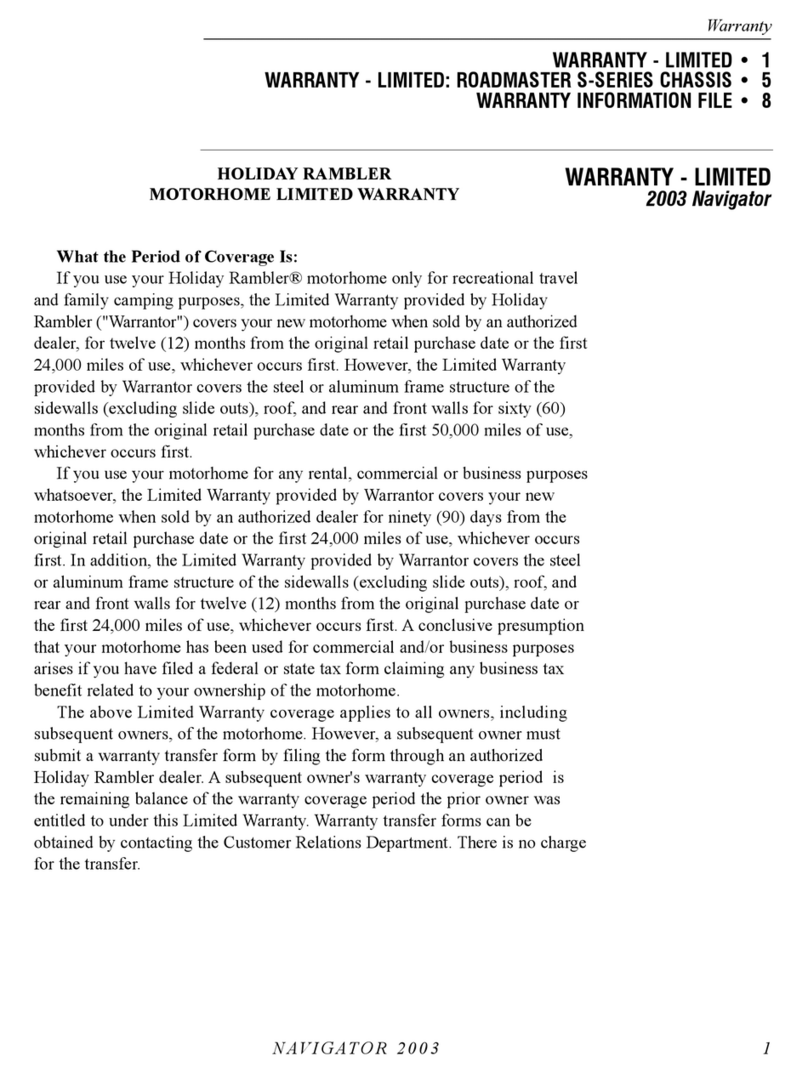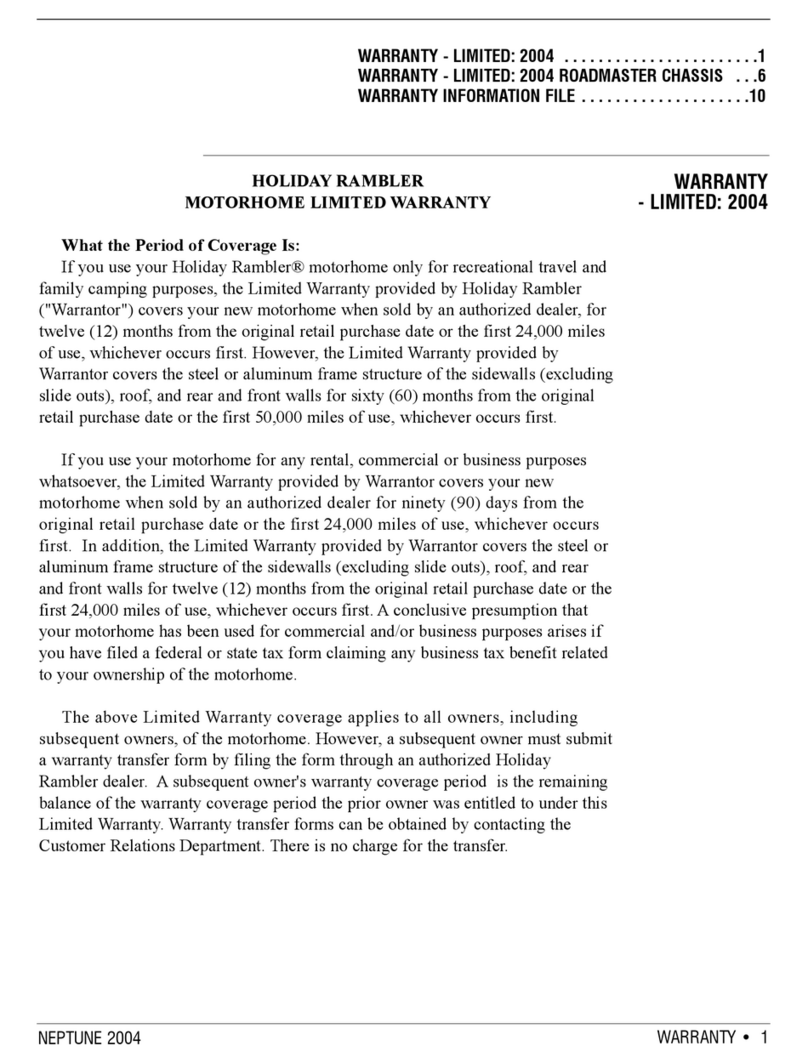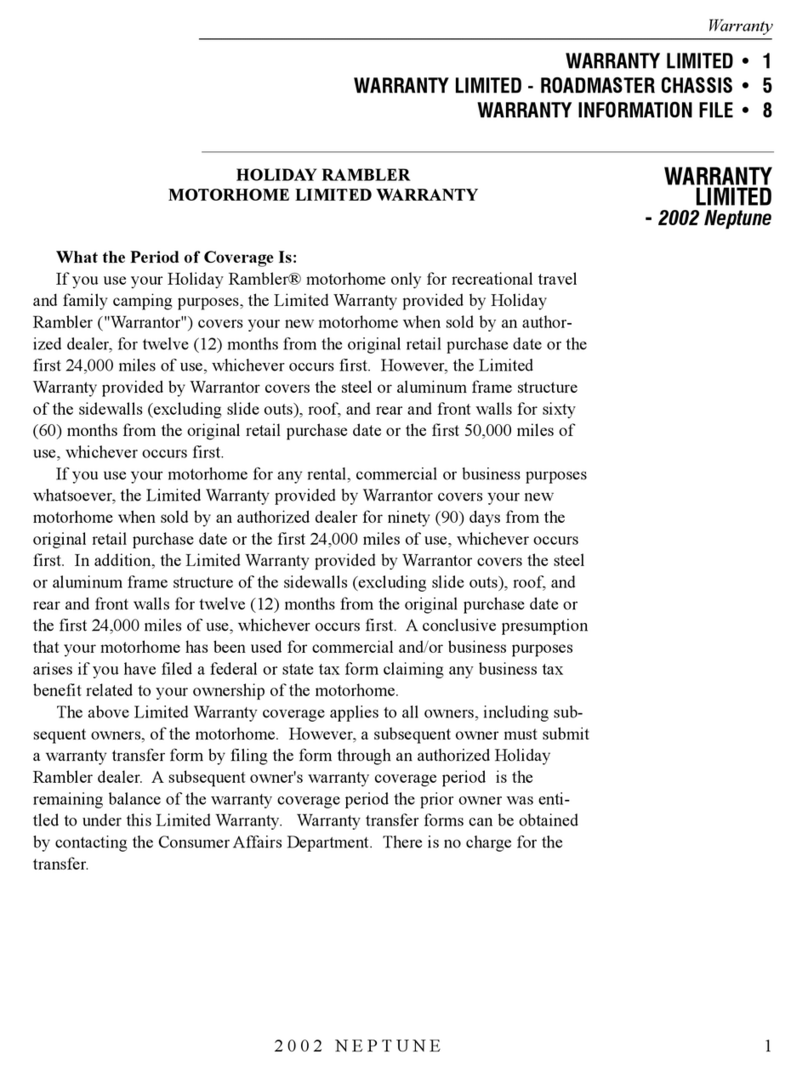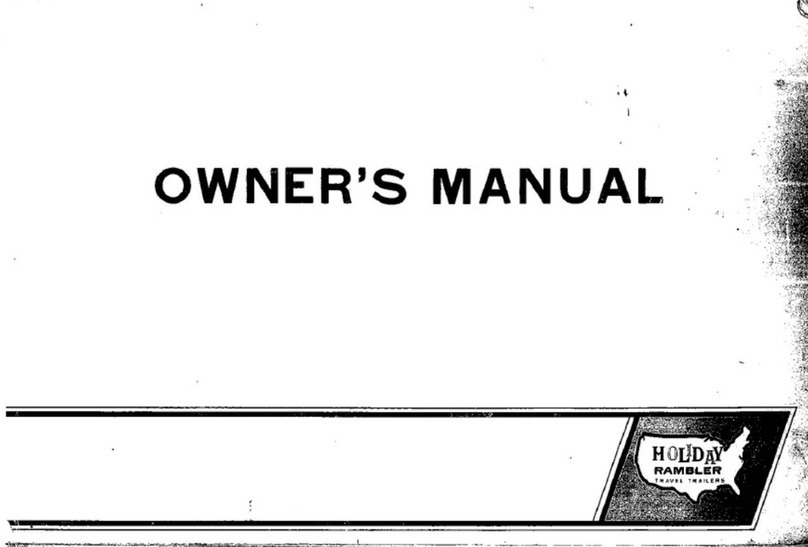HOLIDAY RAMBLER®MOTORHOME LIMITED WARRANTY – 2011
WHAT THE PERIOD OF COVERAGE IS:
This Limited Warranty provided by Monaco RV, LLC (“Warrantor”) for your Holiday
Rambler
®
covers those components, assemblies and systems of your new motorhome not
excluded under the section “What is Not Covered” and when sold by an authorized
dealer, for twelve (12) months from the original retail purchase date or the first 24,000
miles of use, whichever occurs first. However, this Limited Warranty covers the internal
steel or aluminum structural support frames inside the walls and roof (excluding slide-
outs) for sixty (60) months from the original retail purchase date or the first 50,000 miles
of use, whichever occurs first. If you use your motorhome for any rental, commercial or
business purposes whatsoever, the Limited Warranty provided by Warrantor covers your
new motorhome when sold by an authorized dealer for ninety (90) days from the original
retail purchase date or the first 24,000 miles of use, whichever occurs first, and it covers
the internal steel or aluminum structural support frames inside the walls and roof
(excluding slide-outs) for twelve (12) months from the original retail purchase date or the
first 24,000 miles of use, whichever occurs first. A conclusive presumption that your
motorhome has been used for commercial and/or business purposes arises if you have
filed a federal or state tax form claiming any business tax benefit related to your
ownership of the motorhome. The above Limited Warranty coverage applies to all
owners, including subsequent owners, of the motorhome. However, a subsequent owner
must submit a warranty transfer form by filing the form and paying the transfer fee. A
subsequent owner’s warranty coverage period is the remaining balance of the warranty
coverage period the prior owner was entitled to under this Limited Warranty. Warranty
transfer forms can be obtained by contacting the Customer Relations Department. There
is a one time, $500 processing fee for the transfer.
LIMITATION AND DISCLAIMER OF IMPLIED WARRANTIES:
IMPLIED WARRANTIES, IF ANY, ARISING BY WAY OF STATE LAW,
INCLUDING ANY IMPLIED WARRANTY OF MERCHANTABILITY AND ANY
IMPLIED WARRANTY OF FITNESS FOR A PARTICULAR PURPOSE, ARE
LIMITED IN DURATION TO THE TERM OF THIS LIMITED WARRANTY AND
ARE LIMITED IN SCOPE OF COVERAGE TO THOSE PORTIONS OF THE
MOTORHOME COVERED BY THIS LIMITED WARRANTY. WARRANTOR
DISCLAIMS ALL IMPLIED AND EXPRESS WARRANTIES, INCLUDING THE
IMPLIED WARRANTY OF MERCHANTABILITY AND THE IMPLIED
WARRANTY OF FITNESS FOR A PARTICULAR PURPOSE, ON
COMPONENTS AND APPLIANCES EXCLUDED FROM COVERAGE AS SET
FORTH BELOW. There is no warranty of any nature made by Warrantor beyond that
contained in this Limited Warranty. No person has authority to enlarge, amend or modify
this Limited Warranty. The dealer is not the Warrantor’s agent but is an independent
entity. Warrantor is not responsible for any undertaking, representation or warranty made
by any dealer or other person beyond those expressly set forth in this Limited Warranty.
Some states do not allow limitations on how long an implied warranty lasts, so the above
limitation may not apply to you.
WHAT THE WARRANTY COVERS:
Warrantor’s Limited Warranty covers defects in the manufacture of your motorhome
and defects in materials used to manufacture your motorhome. “Defect” means the failure
of the motorhome and/or the materials used to assemble the motorhome to conform to
Warrantor’s design and manufacturing specification and tolerances. Also see the section
“What the Warranty Does Not Cover” set out below.
WHAT WE WILL DO TO CORRECT PROBLEMS:
Warrantor’s sole and exclusive obligation is to repair and/or replace, at its option, any
covered defect if: (1) you notify Warrantor or one of its authorized servicing dealers of
the defect within the warranty coverage period and within five (5) days of discovering the
defect; and (2) you deliver your Motorhome to Warrantor or Warrantor’s authorized
servicing dealer at your cost and expense. It is reasonable to expect some service items to
occur during the warranty period. The performance of warranty repairs shall not extend
the original warranty coverage period. Further, any performance of repairs after the
warranty coverage period has expired or any performance of repairs to component parts
and appliances that are excluded from coverage shall be considered “good will” repairs,
which shall not alter the express terms of this Limited Warranty. If the repair or
replacement remedy fails to successfully cure a defect after Warrantor received a
reasonable opportunity to cure the defect(s), your sole and exclusive remedy shall be
limited to Warrantor paying you the cost of having an independent third party perform
repair(s) to the defect(s). Warrantor may use new and/or remanufactured parts and/or
components of substantially equal quality to complete any repair.
Imperfections and/or damage to interior and exterior surfaces, trim, upholstery and
other appearance items may occur at the factory during manufacture, during delivery of
the motorhome to the selling dealer or on the selling dealer’s lot. Normally, any such
imperfections are detected and corrected at the factory or by the selling dealer during the
inspection process performed by the Warrantor and the selling dealer. If, however, you
discover any such imperfection or damage when you take delivery of the motorhome, you
must notify your dealer or Warrantor within thirty (30) days of the date of purchase to
have repairs performed at no cost to you in accordance with this Limited Warranty. If not
reported within this time, such imperfections are conclusively presumed to be the result
of normal wear and tear.
If a servicing dealer is unable or unwilling to solve a problem you are convinced is
covered by the Limited Warranty, or that concerns the safety of your motorhome, or that
may involve local consumer protection or “lemon” laws, then you must, to the extent
permitted by law, notify Warrantor directly in writing of the failure to successfully
repair the defect(s) so that Warrantor can become directly involved in performing a
successful repair.
HOW TO GET SERVICE:
The “Acknowledgement of Receipt of Warranty/Production Information” form must be
returned to Warrantor promptly upon purchase to assure proper part replacement and repair
of your motorhome. Failure to return the “Acknowledgement of Receipt of
Warranty/Production Information” form will not affect your rights under the Limited
Warranty so long as you can furnish proof of purchase. For warranty service simply contact
